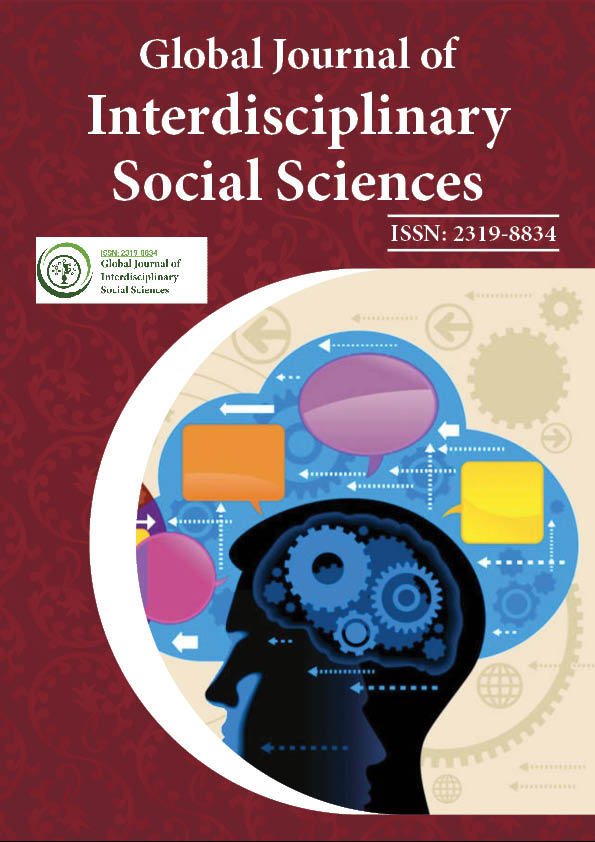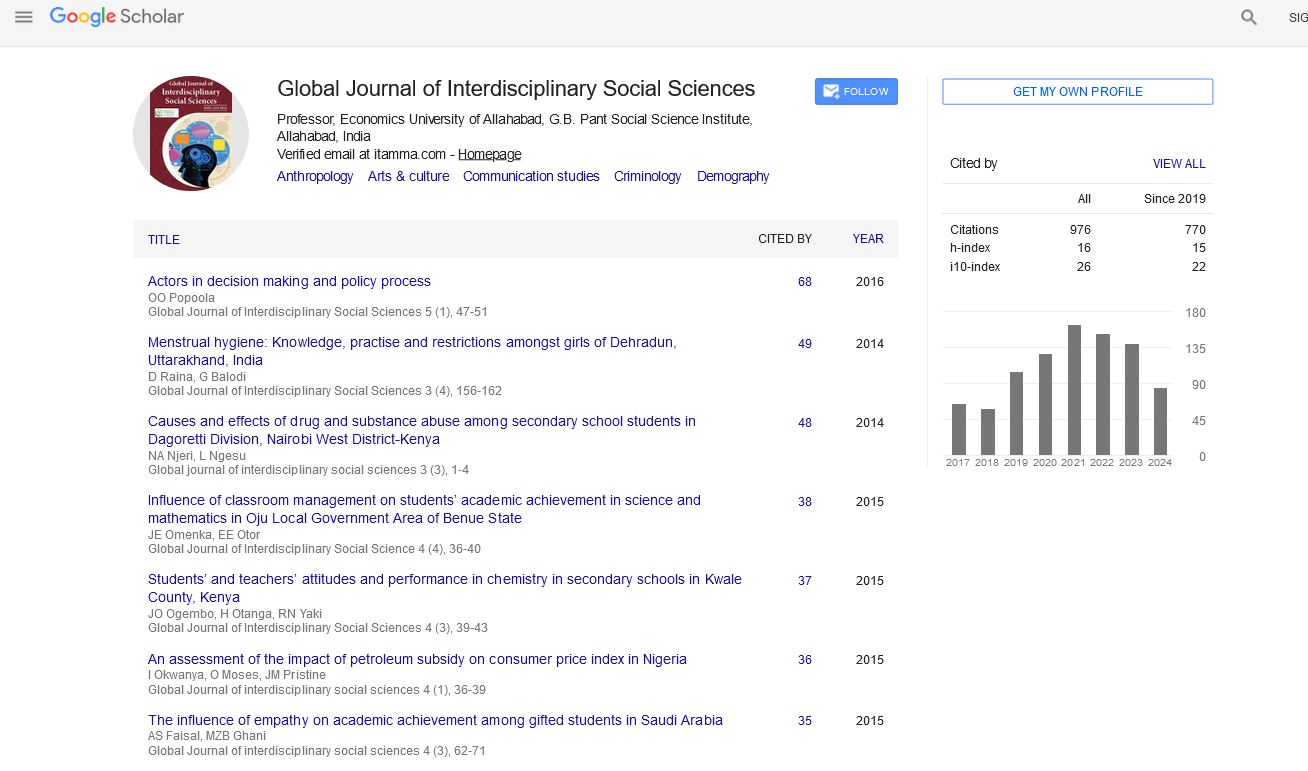Indexed In
- JournalTOCs
- Google Scholar
Useful Links
Share This Page
Journal Flyer

Open Access Journals
- Agri and Aquaculture
- Biochemistry
- Bioinformatics & Systems Biology
- Business & Management
- Chemistry
- Clinical Sciences
- Engineering
- Food & Nutrition
- General Science
- Genetics & Molecular Biology
- Immunology & Microbiology
- Medical Sciences
- Neuroscience & Psychology
- Nursing & Health Care
- Pharmaceutical Sciences
Abstract
The Relationship Between School Climate and Students Academic Achievement
Thomas Agyemang
There has been much global concern on issues that affect students within the 20th century in the area of school climate variables that account for variations in the performance of senior high school students’ academic achievement in Africa, Ghana; and the degree to which these school climate constructs impact on students’ academic achievement in Ghanaian senior high schools, as well as to determine whether the school type and student type influences students’ achievement. The United Nations and its world bodies like WHO, UNESCO, UNICEF convene conferences which seeks to make interventions and recommendations on issues concerning education, health, peace and democracy within the global framework. Specific examples are: Education for All (1990), the Convention on the Right of the of the Child (1990), and Education for Peace, Human Rights and Democracy (1995), which have led to a wide ranging debate on effective strategies for achieving its ambitious goal (Pridmore & Stephens 2000; UNESCO 2000).
School climate is an important factor in the successful implementation of school reform programs; for example, teachers’ perceptions of school climate influence, their ability to implement school-based character and development programs. Studies about the implementation of character education programs suggest that the most effective ones are those incorporated into the school curriculum and developed holistically with the school community. For example, teachers are expected to positively influence children and youth, not only teaching them to read, write, and think in words and numbers, but also to develop their social and moral sensitivities, character, and sense of citizen¬ship. The core characteristics of a liberal education that are implicit in specific sets of required disciplines are the development of rational, critical and imaginative thinking, an understanding of one’s culture, its values and traditions, as well as engaging with other cultures, embracing diverse ideas and being skilled in methods and technologies that facilitate communication of all kinds. Freiberg & Stein (1999) described school climate as the heart and soul of the school and the essence of the school that draws teachers and students to love the school and to want to be a part of it. This renewed emphasis on the importance of school climate was further reinforced by a meta-analysis study performed by Wang et al. (1997), which found that school culture and climate were among the top influences in affecting improved student achievement. Their study also found that state and local policies, school organization and student demographics exerted the least influence on student learning.
School climate and student achievement should be paired with efforts to close achievement gaps. It is during the middle grades, particularly in lower-performing schools that serve high-poverty populations that achievement gaps often become so large that they cannot be overcome by students as they move forward into high school. If middle schools provide a solid curriculum base for students and engage students in the learning process, students should be more invested in the educational process and may be more likely to complete high school.
Students who end their ninth grade year on track to graduate in four years are four times more likely to earn a diploma than those who fall off-track. One way to improve retention rates for high school students is to focus on achieving student success earlier in students’ academic careers, namely, at the middle school level.
A quantitative study is appropriate given that the research question seeks to examine the relationship between variables. The variables, school climate calculation, and student achievement have been measured so that numbered data can be analyzed using statistical procedures. A correlational model was used because the direction from cause to effect cannot be established with certainty and extraneous variables can never be ruled out completely. Causal models can be extremely useful for generating hypotheses for future research and for predicting potential causal sequences in instances where experimentation is not feasible such as in the field of education.
Published Date: 2020-11-28;

